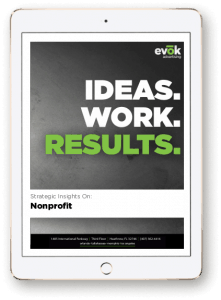
Emotion, Motivation, Donation: Telling Nonprofits’ Impact Stories
You have every statistic on the meals your nonprofit has packaged over the last year, the homes it’s built, and the kids it’s sent to school. You also know that when today’s donors dig deep, they want to see that their donations aren’t getting shallow results. It’s easy to focus on selling the stats of your impact to your audience but relying on a quarterly report to speak for your nonprofit ignores a core aspect of why it exists in the first place: the human element.
Blog posts, videos and any other easily shareable mediums are great ways to show off what your nonprofit does via social media and share an impact story with the world.
The Protagonist of Your Impact Story
Give your audience a central figure to root for. The “heart” of your nonprofit isn’t an administrative team or a particularly effective drive for donations—it’s a single child, family, school or other party whose story embodies exactly what your group stands for. Your organization may help thousands, but it’s the story of one that will convey the emotion needed to motivate donors.
Talk to those whose lives have been changed by your organization and relate them to your potential donors. Perhaps the single mother wanting to give her family the Christmas they’ve been dreaming of lives in a neighborhood not unlike their own. Maybe the child halfway across the globe wants nothing more than the equipment to play the same schoolyard games that their children do. Stories like these evoke feelings of simultaneous sympathy and empathy—a reader or viewer feels sympathetic when seeing a fellow human being in distress and finding common ground between a donor and beneficiary generates empathy as they see themselves in the other party’s shoes.
How Did Your Nonprofit Step In?
This is where the story becomes that of the protagonist and your nonprofit. Outline the rising action of what brought this individual and your organization together, keeping the audience’s relationship with the protagonist in mind.
Let your blog post or video be a vehicle for your beneficiary to tell their own tale of how they found themselves in need of help. Let them genuinely explain the climactic moment that took them to your nonprofit.
Now, it’s time to show where your organization jumped in to help. Notice how this isn’t an opportunity to tell how you made an impact in the protagonist’s life—rather, let your post show what you made happen. This is a great time to employ photos of the children of that single mom overjoyed on Christmas morning or the neighborhood kids on another continent happily playing a soccer game that your donors helped finance.
Your nonprofit has a phenomenal story to tell. Don’t let its humanity get lost in numbers and spreadsheets.